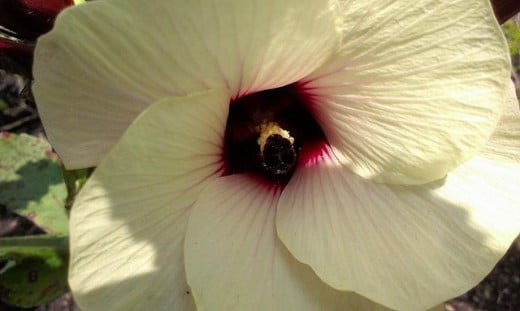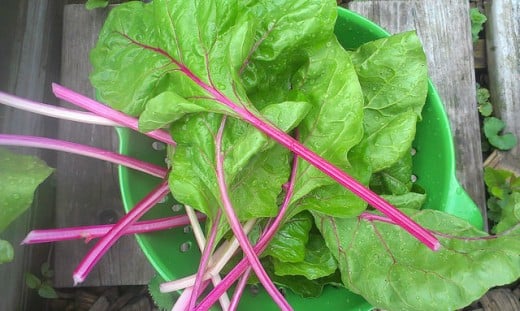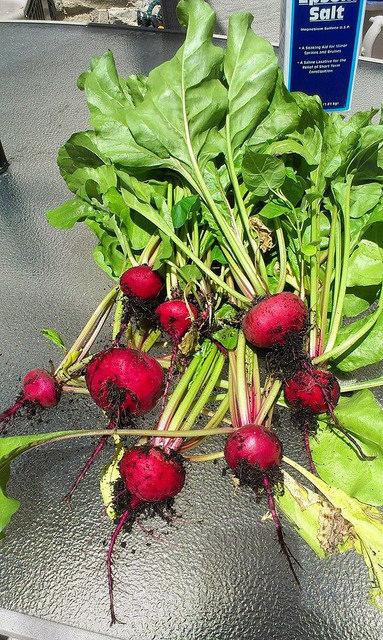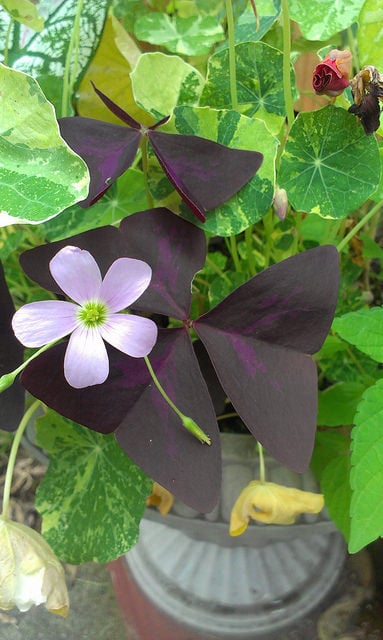Year End Gardening Recap and Planning for Next Year
Yearly Recap
What worked well in your garden this year? What didn't do so well in your garden this year? These are important questions to ask yourself in the "off-season" to better gauge how you will plan your growing season for next year. Sometimes, our best efforts to grow a particular plant can go awry due to unforeseen circumstances like weather anomalies or disease. Dealing with weather conditions can sometimes be like a crap shoot trying to figure out what will do well and won't do well in any given growing season. I should know; I live in the Chicagoland area. Last winter we broke several records for both snowfall and cold, followed by a delayed spring and mild summer. I lost several hardy and well-established perennials. Some things I normally grow every season did poorly, while others seemed to not be affected one way or another.


Keeping Detailed Notes
I grow a lot of things. It can be a challenge keeping track of everything. My advice is to keep detailed notes in a spreadsheet or find an on-line app where you can catalog your plants, set milestones, upload pictures and keep notes. This is the only efficient way that I have been able to keep track of over 120 different plantings on my property.
There are several apps out there to choose from. I personally use Folia (myfolia.com). It is a free app, but some of the more advanced functions are only accessed by paying a yearly fee. This fee goes for the basic upkeep of the website, which in my opinion, is worth it. Whichever site or method you choose, keeping detailed notes goes a long way in keeping your plantings organized and can help you plan for the next season.
My Year in Review
I took a step outside my comfort zone and decided to try some new plants and varieties to spice things up a bit. It can get boring growing the same things year after year. I also used this season to try to replace some of the plants I lost during our record-breaking winter. Below you will find a variety of annuals, perennials, and vegetables that were new to my garden this past growing season.

Okra "Burgundy"
I've never grown Okra before, so last winter I decided it was time. I do like to use it in a variety of dishes, so it was a no-brainer to attempt to grow this in my home garden. I started the seeds 4 weeks before the last frost. I admit, I was a bit concerned for the seedling's survival because of the weird weather we were experiencing in the spring, but they didn't show any signs of stress. Once temps started to rise to 65-70 degrees, the seedlings took off rather fast. By mid-July, the plants were well above the 4 feet average height and I was in constant supply of pods. By late August, the plants topped out at 6 1/2 feet tall. Aside from it's lovely burgundy colored pods, these plants produce large, hibiscus-like flowers that are stunning. The flowers last about a day and from there they die back and the pod starts to grow. You want to pick the pods when they are smaller than about 6 inches in length. The large ones get too woody and are inedible.
Swiss Chard "Five Color Silverbeet" and Kale "Blue Curled Scotch"
Both Swiss Chard and Kale are very hearty early spring crops. I have grown the bright lights variety of Swiss Chard before with a good success rate, but decided to try a new variety. To my surprise, it lasted the entire summer without bolting, so I was eating it spring, summer and fall, where it finally died back after a few frost days. Direct sow the seeds into the garden in spring two to three weeks before the last frost date. With any luck and/or a mild summer, you will be able to keep this plant going all summer.
The Kale surpassed all my expectations and never bolted either. It lasted slightly longer than the Chard and is more able to deal with fall frosts, so I was able to get a few more harvests in before the end of the season.


Beet "Chioggia"
I have to confess, my family is not a big fan of beets, so up until now, I had never included them in my garden plan. Something spoke to me when looking in all the seed catalogs last winter and I just had to try this because of it's neat ringed design when sliced. I only grew one row as an experiment. Sow them in spring a few weeks before the last frost. They did well without much fuss and I harvested some nice sized roots that were well-formed and perfectly red in color. We ended up using a few raw in a salad and the rest I pickled.



Annuals
I like to use annuals to fill in areas around my perennials and use in containers. Annuals give me a chance to try different color combinations without having to commit to a permanent plant in my garden.
Dianthus "Black and White Minstrels"
I've always been fascinated by dark colored, almost black flowers and plants. So when I saw this seed for sale, I knew I had to try it. You could start the seeds indoors, but I waited to directed sow into my planting bed after the last frost date. They started off a bit slow, but once they started flowering, they continued to do so until frost. They do have a slight clove fragrance like others in the Dianthus/ Carnation family, which adds to the allure of these flowers.
California Poppy "Purple Gleam"
I have grown the traditional orange-yellow California poppies with great success and needed something short for the front of a border. As with the traditional ones, I sowed the fine seeds barely covering after the last frost date. The fern-like leaves look exactly like the traditional kind, but the flowers were delicate shades of pinkish purple. Since these are prolific self-seeders, I left these go to seed, so I'm hoping a few pop up again in the spring.
Oxalis "Burgundy Shamrock"
Oxalis grows from small bulb or corms. Plant in spring after danger of frost. I used these in combination with Nasturtiums in some planters I had framing my front entryway. The striking dark burgundy contrasted well with the lighter green Nasturtium leaves and bright flowers. A bonus to this plant is it produces small, pink flowers that sit above the leaves. It was a well-behaved plant, staying in a mounded form. Because of the mild summer, I was flush in blooms all summer, but this isn't normally the case in heat and humidity.



Perennials
Because of the severe winter we had, I had some bare spots in some of my planting beds.
Shasta Daisy "Crazy Daisy"
I already have some of the traditional Shasta daisies in my bed, but wanted to add a few more to balance the planting bed on the opposite side of where the other ones are. So, instead of the traditional daisies, I opted for the "Crazy Daisies" in which the petals are more jagged. I bought starts in the spring and continued to monitor their moisture level until I was convinced that the roots were starting to establish themselves. I did get a few blooms and hope that next summer it is full of flowers.
Lobelia aka Cardinal Flower
I didn't realize that Lobelia came in other colors than the traditional red. I wanted something blue or purple to place in a part-shaded area to add color. My first choice for this site were Astilbe, but problems with the grower (bad winter!) caused them to be unavailable, so I settled on these which adapted very successfully to the planting bed. I used them in a bed filled with the usual shade garden suspects: Hostas, Ferns, Lady's Mantle etc. I planted them at the back of the border in late spring and they just took off. At maturity, one of the plants reached 4 feet. The other came in at 3 feet. Average height for these plants range from 2 to 3 feet. Once it started to bloom in mid-summer it continued to do so until frost.
Salvia "Sensation Rose"
I already have two of the East Freisland Salvias, which bloom purple, in my landscape. I had an empty spot in a new planting bed I created and instead of going with the purple, I wanted something pink. This Salvia blooms with rose-colored spikes and like traditional Salvias, a good cut after the flowers fade with force it to re-bloom for you. It is a magnet for Bees and butterflies too, which is an added bonus!

The Good, The Bad and The Ugly: Things that did Poorly
Overall, I'm very happy with the success of my garden despite the unusual spring and summer. There were, however, a few things that absolutely did not do well.
Watermelon "Fairie Hybrid"
This watermelon has a shorter days to maturity rate than other watermelons, which is the reason I decided to try it for my northern garden. I started them from seed indoors about six weeks before the last frost. They were doing fantastic for a long while after transplanting out into the garden. But then, something happened. The weather never really got hot enough for these and the result was small fruits that never matured. To make matters worse, some critter or critters finally finished them off by taking some bites out of the fruit. Unless I know for sure that we are going to have a nice, hot and long summer, I'm not going to bother with watermelon again. I will stick to pumpkins, which do really well in my area since Illinois is the pumpkin growing capital of the world!
Mexican Sour Gherkin
I went into this seed purchase with high hopes of large yields of small sour cucumbers for fresh snacking or pickling and got a really paltry return on my efforts. After direct sowing several plants, I got about enough to fill one cup and then it never did anything else. The fruits were yummy but I didn't really get enough of them to do much with. I'm chalking this up to the weather and will possibly try them again.
Tomatoes-all types
I grow tomatoes every year without problems, but again, because of the mild and short summer, it took a long time for me to get any tomatoes and worse, by the time I started harvesting ripe tomatoes, it was almost fall. what was left were green tomatoes that never matured and I ended up picking them and ripening them inside the house. Very disappointing to a family that loves fresh tomatoes in the summertime.
Tell Me About Your Garden!
Use the comments section below to tell me how your garden did this year. I love hearing other people's feedback! Thanks for reading my Hub! I hope you enjoyed it!
© 2014 Lisa Roppolo








